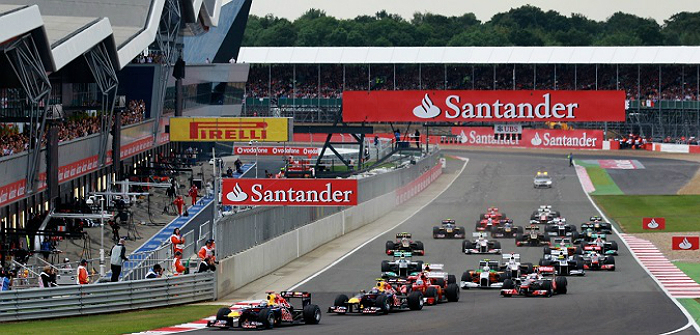The future of the British Grand Prix is a subject that people will be watching closely in the months ahead, as it will give us a much better view of how to judge the strategic thinking of Liberty Media. It is very clear that they see the future of Formula 1 being in ‘destination cities’ around the world, although the new chairman, Chase Carey, continues to say that the company wants to respect the heritage of the sport. It is not easy to match the two ambitions and dropping Silverstone in 2020 would be a bad idea, even if there is a terrific race venue found in London.
Could there be two races in the UK? That is pretty doubtful given the pressure on the F1 calendar at the moment. And what exactly does Carey mean when he talks about the heritage? Spa and Monaco? Or Silverstone, Spa and Monaco? The major problem for Silverstone remains one that is never going to be solved: it is hard to get to. There is no public transport and it involves a huge effort to get there. To older F1 fans this is the norm. We do it because we have always done it, but times are changing and F1 must find a new audience.
The CSM Global Sports Fan Survey is one of the largest pieces of fan research ever commissioned – and it is not just about motorsport. It looked at 48 sports and asked 18,000 adults in 18 countries around the world. The survey underlined what we already know about a number of sports, such as the fact that golf, cricket and tennis are all suffering from having aging audiences.
When it came to motor racing, however, the survey suggests that around 800 million people around the world are self-proclaimed Formula 1 fans. This is about twice as many people as watch Grands Prix live on television in the current era and equates to about 25% of all the adults in the 18 countries surveyed.
The research revealed that the fans break down into six distinct group: Fanatics, Consumption Addicts, New Wave, Die Hards, Couch Casuals and Marginals. The Marginals accounted for 24% of those surveyed, with the Fanatics and Die Hards being just 3% and 10%. The big surprise was that the New Wave accounted for a massive 33% – about 260 million people. The New Wave tend to be younger than the average Formula 1 fan, with 53% of them under the age of 35 and around a third being recent converts to the sport. They tend to be fairly well-to-do, with 75% being from the ABC1 demographic, which basically translates to ‘middle class’.
In the New Wave the balance between the sexes is also different from the average in F1, with a 51:49 split rather than 60:40. What is absolutely fascinating about this group of fans is that 55% of them never watch Formula 1 on television nor follow it in traditional media such as radio or written media (paper or electronic). And they don’t follow Twitter and Facebook to any great extent. What they do like is to watch video clips of the F1 action and look at photographs that appear online.
They are not really interested in results or what the drivers have to say, but rather they want to feel engaged by content that is being delivered direct to their mobile devices. Most of this content is created by sponsors rather than by the media itself and it seems that they want more of this to keep their attention. This perhaps explains a little about the motivations behind the Liberty Media push toward fan festivals and building up activities around race meetings. It also explains the desire to offer new experiences.
The analysts of the survey data have suggested that this segment belongs to what is increasingly known as the ‘experience economy’, which is driven by people having unusual experiences, often shared with others. This ties in with the latest data just published from Barclaycard, which processes about half of all Britain’s credit and debit card transactions. Recent UK figures show a 20% increase in spending in pubs compared with the same month last year, with spending in restaurants up 16% and cinemas and theaters enjoying an increase of 13%. Department store sales are down and vehicle sales have tumbled by 11%.
The company says that this trend has been emerging for about a year and that people are spending more on doing things rather than buying things, despite the fact that there is political uncertainty, austerity and increasing inflation. One theory is that with the growth of the virtual world, the authenticity of live experiences is becoming increasingly important to people, particularly when they share these experiences with others. They are also tending to buy merchandise to commemorate their experiences.
The most interesting point about this is that F1 experiences do not need to be confined to races and racing circuits – and that opens up a lot of interesting possibilities.



